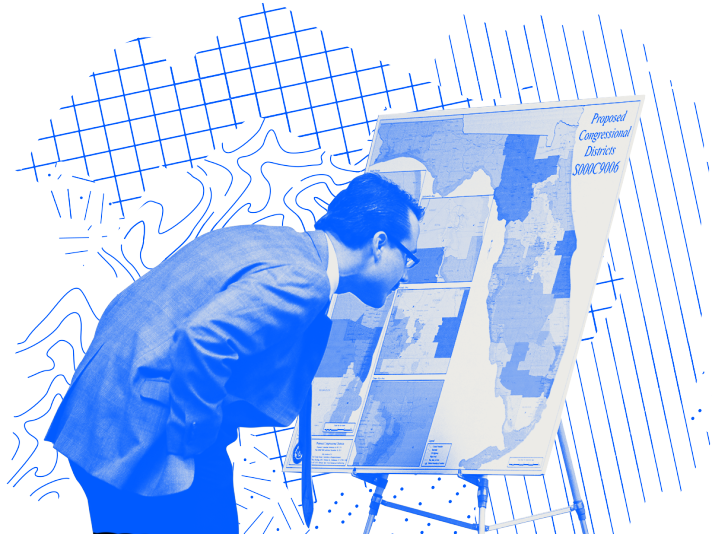Gerrymandering: When Maps Become Weapons

Named after Governor Elbridge Gerry and the lizard-like district he approved in 1812, gerrymandering has grown into a modern form of government corruption that weakens democracy.
The Dive
Let’s rewind to 1812. Governor Elbridge Gerry of Massachusetts signed off on a bizarrely shaped voting district that looked like a mythological salamander. A Boston newspaper mocked it by dubbing it the 'Gerry-mander' — and just like that, the name (and the problem) stuck.
Gerrymandering happens when politicians manipulate the boundaries of voting districts so their party keeps winning, even if most voters prefer someone else. They do this using two main tricks: 'packing' (cramming as many opposing voters as possible into a few districts so their influence is limited) and 'cracking' (splitting opposing voters across many districts so they never form a majority).
Why does this matter? Because it rigs the system. If a political party can draw maps that almost guarantee victory, they no longer have to earn public support or even care what most voters think. Safe districts mean politicians can ignore broad opinion, push through laws that many people dislike, and face little risk of losing their seats. Without the threat of being voted out, accountability fades and power becomes nearly impossible to challenge.
Modern gerrymandering is worse than ever. Today’s software can sort voters by race, income, social media habits, even how long someone watched a political video. This precision lets politicians carve districts that dilute opposing voices and pack their supporters into easy wins.
This doesn’t just silence voters, it destroys fair competition. Even worse, it makes elections look legitimate when they aren’t. From the outside, everything seems democratic: ballots are cast, results are announced. But behind the scenes, the game is rigged from the moment the lines are drawn.
Gerrymandering has been used to suppress Black voters after Reconstruction, isolate urban voices in rural states, and manipulate power in swing states like North Carolina, Texas, and Wisconsin. Both Democrats and Republicans have used it, but in recent years, extreme partisan gerrymandering has tilted the scales dangerously.
In the Supreme Court’s 2019 decision Rucho v. Common Cause, justices ruled that partisan gerrymandering is a 'political question' and can’t be judged in federal court (unless racial discrimination is involved). That left the door wide open for map manipulation across the country.
So where does that leave us? Staring at a democracy that’s being quietly dismantled, one district line at a time. If democracy is supposed to be 'one person, one vote,' then gerrymandering is a betrayal of that promise. It's time to stop treating it like a quirky political trick. It’s not clever. It’s not cute. It’s corruption, plain and simple, and we all pay the price.
Why It Matters
Gerrymandering strikes at the heart of democracy. When maps are rigged, power becomes untouchable, and voters are reduced to spectators in a game they should be playing. Fair maps mean fair representation, and without that, the idea of 'government by the people' becomes just a slogan. Understanding gerrymandering is the first step toward dismantling a system that undermines trust, silences voices, and reshapes our country in ways that benefit the few at the expense of the many.
?
How does gerrymandering impact local communities differently from national elections?
Should independent commissions draw voting districts instead of politicians? Why or why not?
What role does race play in modern redistricting efforts?
How can young people get involved in advocating for fair maps and electoral reform?
Why might gerrymandering lead to more extreme political candidates being elected?
In what ways is gerrymandering a form of voter suppression?
Dig Deeper
Craig from Crash Course explains gerrymandering, how it works, and why it distorts democracy.
This short explainer breaks down the strategies used to redraw district lines for political gain.
Related

Universal Suffrage in the United States
The right to vote wasn’t handed to everyone—it was fought for, over centuries, by people demanding that democracy actually mean everyone has a voice.

Votes for Women: The Fight for the 19th Amendment
It took more than 70 years of protests, petitions, and picket lines to win the right for women to vote in the United States. The 19th Amendment didn’t just expand democracy—it redefined it.

Democracy: Government by the People
Democracy is more than voting every few years. It is a way of sharing power, protecting rights, and making sure ordinary people have a real voice in how they are governed.
Further Reading
Stay curious!
